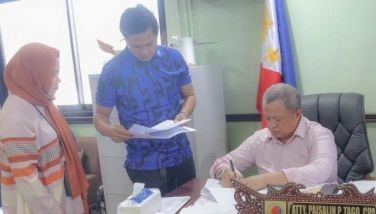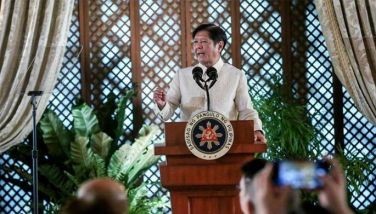USAID-sponsored guidebook to help local governments protect coral reefs
MANILA, Philippines - A coral reef monitoring guidebook that will help local government units and fishing communities implement projects and activities was recently launched by concerned agencies led by the USAID’s Philippine Environmental Governance Project (EcoGov).
Dr. Porfirio Aliño, a coral reef and ecology expert from the University of the Philippines’ Marine Science Institute, said the “Coral Reef Monitoring for Management Guidebook” provides interesting illustrated step-by-step instructions on drawing up a reef monitoring plan and survey methods like the manta tow, snorkel survey and point-intercept transect.
The guidebook also provides instructions in conducting fish visual census, recording human activities and natural disturbances that could impact on the marine environment, and monitoring fish catch, he said.
“It includes instructions on how to do a simple MPA (marine protected area) perception survey… Also in the manual are samples of forms that will aid the monitoring initiatives. Tips and suggestions are provided in each chapter,” Aliño said.
EcoGov and its partners have utilized the methods contained in the manual for participatory monitoring of its sites in Illana Bay in Zamboanga del Sur, Davao Gulf and Camotes Sea in Cebu.
The guidebook can be also used to assess the status of the Philippine implementation of Coral Triangle Initiative targets agreed upon in Manado, Indonesia.
Aliño said the Department of Environment and Natural Resources, USAID (United States Agency for International Development) and their partners can use the manual to monitor improvements in the ecological conditions of coral reefs within the Coral Triangle – comprising Indonesia, Malaysia, Papua New Guinea, Philippines, Solomon Islands and Timor-Leste – which is considered the global center of marine biodiversity.
The guidebook, first printed in 2001, was initially distributed by the Coastal Resource Management Project of the USAID.
It was widely utilized all over the country by government agencies, research and academic institutions and civil society organizations involved in the study, establishment and management of marine protected areas.
Meanwhile, the second and latest edition was printed with support from USAID’s Philippine EcoGov, Fisheries Improved for Sustainable Harvest Project, the Department of Agriculture and DENR.
The United Nations Environment Program’s regional office provided support for the guidebook’s translation into Bahasa, Thai, Khmer, Vietnamese and Chinese.
This has allowed the adoption of the guidebook as a tool in MPA management in conserving marine key biodiversity areas in Southeast Asia.
Healthy coral reefs are estimated to provide a net present value of at least P4 million per square kilometer per year, derived from fisheries, tourism, coastal protection, health, livelihood, goods and services.
- Latest
- Trending
































